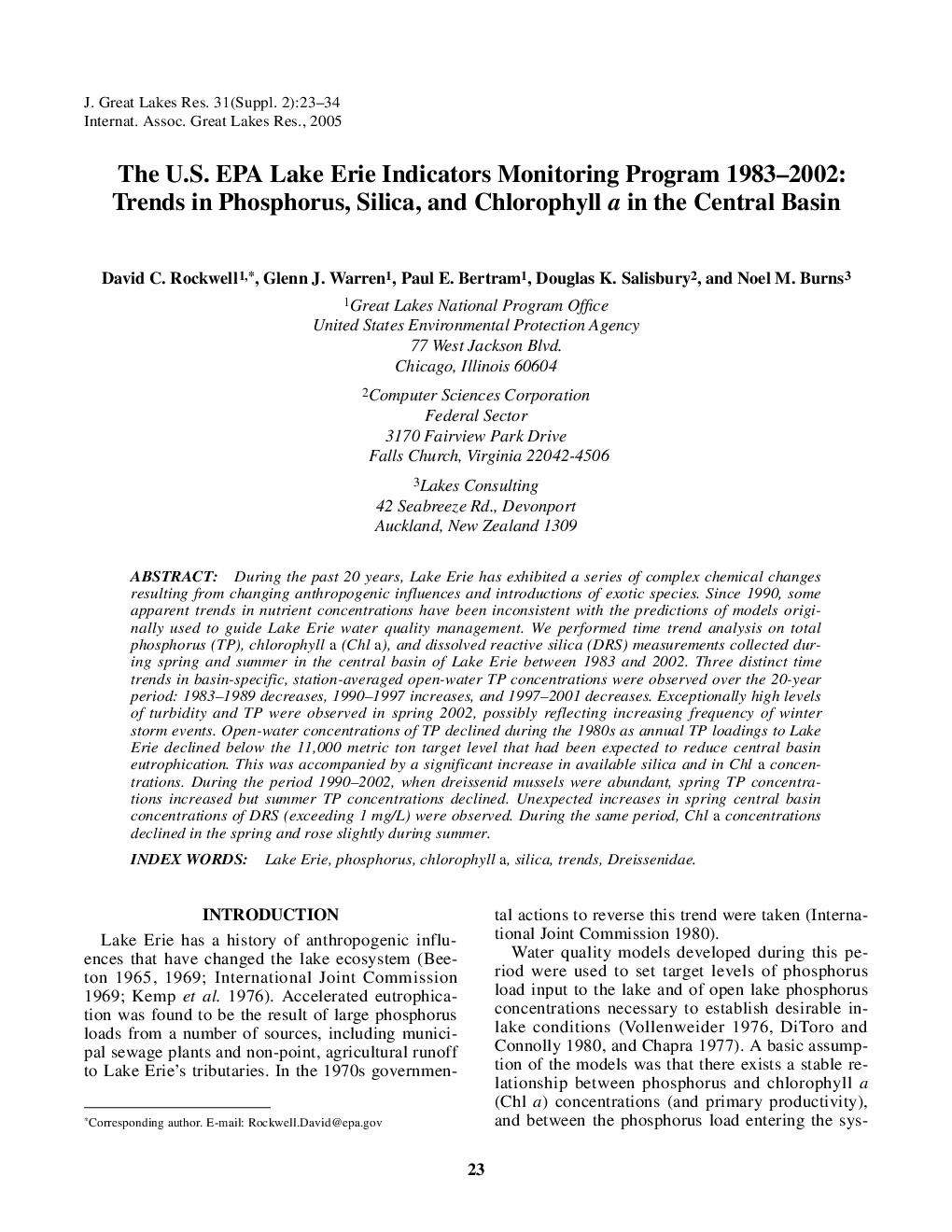| Article ID | Journal | Published Year | Pages | File Type |
|---|---|---|---|---|
| 9450237 | Journal of Great Lakes Research | 2005 | 12 Pages |
Abstract
During the past 20 years, Lake Erie has exhibited a series of complex chemical changes resulting from changing anthropogenic influences and introductions of exotic species. Since 1990, some apparent trends in nutrient concentrations have been inconsistent with the predictions of models originally used to guide Lake Erie water quality management. We performed time trend analysis on total phosphorus (TP), chlorophyll a (Chl a), and dissolved reactive silica (DRS) measurements collected during spring and summer in the central basin of Lake Erie between 1983 and 2002. Three distinct time trends in basin-specific, station-averaged open-water TP concentrations were observed over the 20-year period: 1983-1989 decreases, 1990-1997 increases, and 1997-2001 decreases. Exceptionally high levels of turbidity and TP were observed in spring 2002, possibly reflecting increasing frequency of winter storm events. Open-water concentrations of TP declined during the 1980s as annual TP loadings to Lake Erie declined below the 11,000 metric ton target level that had been expected to reduce central basin eutrophication. This was accompanied by a significant increase in available silica and in Chl a concentrations. During the period 1990-2002, when dreissenid mussels were abundant, spring TP concentrations increased but summer TP concentrations declined. Unexpected increases in spring central basin concentrations of DRS (exceeding 1 mg/L) were observed. During the same period, Chl a concentrations declined in the spring and rose slightly during summer.
Related Topics
Physical Sciences and Engineering
Earth and Planetary Sciences
Earth and Planetary Sciences (General)
Authors
David C. Rockwell, Glenn J. Warren, Paul E. Bertram, Douglas K. Salisbury, Noel M. Burns,
